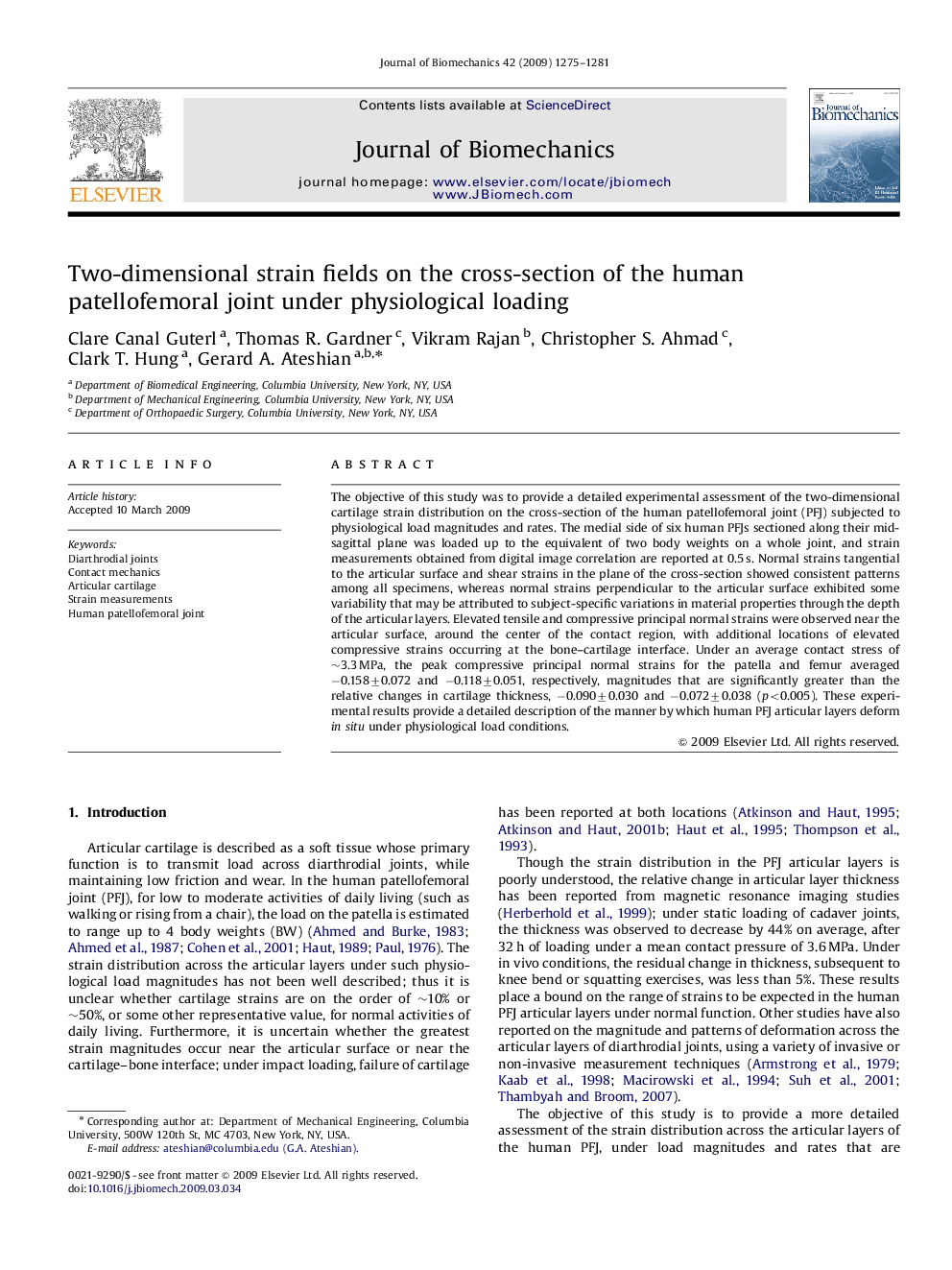| Article ID | Journal | Published Year | Pages | File Type |
|---|---|---|---|---|
| 873362 | Journal of Biomechanics | 2009 | 7 Pages |
The objective of this study was to provide a detailed experimental assessment of the two-dimensional cartilage strain distribution on the cross-section of the human patellofemoral joint (PFJ) subjected to physiological load magnitudes and rates. The medial side of six human PFJs sectioned along their mid-sagittal plane was loaded up to the equivalent of two body weights on a whole joint, and strain measurements obtained from digital image correlation are reported at 0.5 s. Normal strains tangential to the articular surface and shear strains in the plane of the cross-section showed consistent patterns among all specimens, whereas normal strains perpendicular to the articular surface exhibited some variability that may be attributed to subject-specific variations in material properties through the depth of the articular layers. Elevated tensile and compressive principal normal strains were observed near the articular surface, around the center of the contact region, with additional locations of elevated compressive strains occurring at the bone–cartilage interface. Under an average contact stress of ∼3.3 MPa, the peak compressive principal normal strains for the patella and femur averaged −0.158±0.072 and −0.118±0.051, respectively, magnitudes that are significantly greater than the relative changes in cartilage thickness, −0.090±0.030 and −0.072±0.038 (p<0.005). These experimental results provide a detailed description of the manner by which human PFJ articular layers deform in situ under physiological load conditions.
